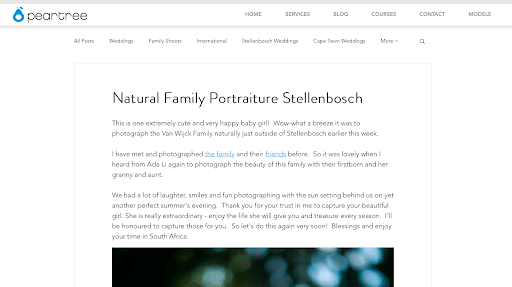Introduction
You’ve heard of B2B, C2C, or whatever the name is, but you’re still in the dark of how it works or how to use it to your business’ benefit. Do not fear; we are near! We’ve done a deep dive into the world of B2B and will share what exactly this is, how it works, and how your business can get more Business to Business leads.
Don’t worry; it’s not as complicated as it sounds. Before you know it, you’ll know your B2B’s and C2C’s like your ABC’s. Well, what are you waiting for? Let’s get going before the B2B gets a bee in its bonnet.
Frequently Asked Questions
Before we jump right into all things B2B-related, let’s take a look at the following questions often asked by readers:
What Is B2C?
B2B stands for “Business to Consumer.” Think of this as heading to the local bakery for a fresh loaf of bread. The bakery has made the bread for you, the consumer, to purchase. Another example is a flea market, where vendors sell their items to consumers. You can, of course, level up this example and state that a large chain like H&M is the supplier, and you are a consumer every time you buy a new shirt.
What Is C2C?
You might have guessed it, but C2C stands for “Consumer to Consumer.” Wait, but how is this possible if there is no business in the equation? Don’t worry; you’re not alone in your confusion! This refers to when consumers or clients of a business sell items to each other.
eBay is a well-known example of C2C operations. On the platform, users can sell their items to each other. Although eBay charges a listing and selling fee, the primary transaction is between two consumers. Let’s not forget the enormous eBay Beanie Baby craze of the 90s, the perfect example of C2C.
What Is C2B?
Finally, we have C2B, which entails Consumer to Business operations. But what on earth can a consumer have to offer a business? You’d be surprised!
C2B agreements can benefit both the consumer and the business. For example, a makeup company will pay to have products sent to a well-known consumer for free, based on the agreement that the consumer will advertise the products to their wide social media audience. Another example may include when a consumer is paid by a business to appear in one of their commercials or write a 5-star review on a widely read platform.
In C2B transactions, the consumer usually has the power of impact on their peers. An example of this is when celebrities are paid to wear famous brands like Nike. Think of Tiger Woods in 2006, when the golfer signed a $100-million endorsement contract. Is that enough to confirm that “Winning takes care of everything”?
How Does B2B Work?
B2B refers to “business to business,” whereas B2C indicates “business to customer.” Every industry has B2B companies, and every B2C generates B2B activity. Wait, but what does all this mean? Don’t worry; we’re getting there.
According to this Marketing Blog from LinkedIn, B2B refers to marketing the services or products of one business to another. Simply put, a B2B business is one that needs to buy goods from another business to complete its operations.
As an example, let’s discuss the car manufacturer Ford. For every F-150 truck that’s standing in a consumer’s driveway, Ford has to purchase tools and supplies in a B2B transaction. Makes sense, right?
Let’s take it one step further. B2B transactions usually occur in one of the following scenarios:
1. Sourcing Material
Let’s say a contractor wants to build a house to put up for sale. For this, they will need to buy everything from bricks and wood to cement and tiles. This all falls under the umbrella of sourcing materials for B2B operations.
2. Services
A master of all is a master of none, which is exactly why successful businesses source out what they need to. Services such as social media marketing, graphic design, and photography for businesses are all services that fall within the B2B framework. Need a professional cleaning service or someone to help with your finances? These are all examples of B2B operations.
3. Sourcing End Products
Many businesses buy finished products with the idea to resell them. This is a common retail occurrence, and you likely come face-to-face with these types of products every time you walk into a store.
A set of coffee cups honoring your favorite sports team? Likely purchased at wholesale prices to re-sell. A new Canon camera for your photography business that you purchased from your local store? Probably imported from Japan, with markup so that you don’t have to pay import costs.
The B2B Market
As you can imagine, the B2B marketplace is vast. It includes everything from industrial suppliers and payroll processors to software developers and stationery suppliers. Most businesses fall under the umbrella of both a B2B marketplace and a B2C marketplace.
In fact, there are considerably more B2B transactions than there are B2C transactions. This doesn’t seem right when you first think of it, but let’s put it in perspective. For every B2C transaction, there are hundreds (or even thousands) of B2B transactions.
Here’s an example to illustrate:
A wedding florist is B2C, right? The wedding couple are her clients, and that’s the end of that.
Only, interestingly enough, it’s not! For the florist to deliver table arrangements, wedding bouquets, and boutonnieres, she will have transactions with multiple businesses. For the bouquet alone, she needs to purchase:
- Flowers from a flower market.
- Buckets to keep the flowers fresh.
- Tools to make the bouquets, such as shears.
- Ribbon to tie the bouquet.
- Gas for her vehicle to deliver the bouquets.
These are just a few transactions in one tier of multi-layered B2B operations. The flower market had to make its own purchases to resell to the florist. Amazon had to buy the buckets from a supplier, and the hardware shop imported the tools from Germany. The ribbon was made in a factory in China, which had to purchase silk material from a different supplier. A florist outsourced to do flowers on behalf of another florist would be another example of a B2B transaction.
You get the idea. As you can see, the B2B marketplace is much more vast than you initially thought. If you start to think about where a product comes from, it’s quite a process to get to its root supplier .
What Are B2B Leads?
B2B lead generation refers to potential clients who a business has identified. Within the B2B sphere of operations, there are often two types of leads:
1. Marketing-Qualified Leads
When a business strongly believes that a lead will turn into a paying customer, they are referred to as marketing-qualified leads. This assumption is based on the potential client’s interaction with the business’ marketing.
Marketing-qualified leads are usually identified in the following ways:
- They are a returning visitor to your website.
- The client opted to be part of your email list.
- They follow and interact with your business on social media.
- They downloaded content from your website.
2. Sales-Qualified Leads
On the other hand, sales-qualified leads are just a progressed form of marketing-qualified leads. It refers to clients who have been identified as ready to make a purchase, in which case a salesperson will contact them.
Here are a few common signs that a potential client is interested in purchasing your product or service:
- They enquired about prices through your website or social media platforms.
- The potential client asked for more information on the product or service.
- They expressed their interest in purchasing a product or service to a salesperson.
- They asked for a demo of the product or service.
Know Your Sales Funnel
The above process is forms part of a sales funnel. A sales funnel usually has the following steps:
Awareness
Create awareness of your brand or business through marketing and online presence. This process can include everything from events and giveaways to advertising, media mentions, and email campaigns.
Discovery
Once you’ve established a presence as a brand, educate your new followers and potential clients on what your business and brand entails. In other words, tell them why your product or service is a necessity. This process, in a nutshell, is nurturing your potential clients until they fall in love with your business.
Evaluation
During the next part of the process, potential clients like to do their own research before buying a product. This is where good reviews, user-generated content, and educational resources or free demos are important.
Basically, you need to persuade clients to purchase your goods or service without shoving it in their face. This is usually through third-party platforms and former clients.
Engagement
Now, the ball is in the potential client’s court. During this process, it may feel like your hands are tied, but there are ways that you can (politely) motivate your potential client to make the purchase. Follow-up with clients, tell them about your other offerings, or even offer a special discount.
This part of the process is often tricky to navigate, but we’ve learned that each business has its own fit, and you’re likely to find a solution after trial and error.
Purchase
Your lead is ready to make a purchase! This is a step to look forward to, but remember that a potential client can still back out. That is why you want to make your check-out point as easy to navigate as possible or offer a variety of payment plans and pricing packages to give hesitant buyers the last nudge.
Loyalty
As you may have noticed, it’s quite a lengthy (and often costly) process to land a new client. Then why aren’t more businesses taking care of the clients they already have?
Many people make the mistake of believing that a client’s lifespan with your business ends once they’ve hit the “buy now” button and your Shopify account makes that satisfying “cha-ching” sound. They couldn’t be more wrong! Make an effort to keep your current clients interested in what you do.
Back on the floristry example, ways that a wedding florist can keep a client even after a wedding (which is usually a one-off sale) include:
- Follow up with an email after the event, offering a print of the flowers used in their bouquet.
- Show your work on social media with weekly tutorials.
- Offer workshops to teach a former client the basics of at-home flower care.
- Create an email list with flower tips, seasonal advice, and your top products for sale.
We could go on! As you can see, there are multiple ways to encourage a one-off client to become a lifelong business supporter.
How to Generate B2B Leads
Now that you know the importance of B2B leads, how can you land more? Do not fret! We’ve done all the research so that you don’t have to. Here are some easy steps to attracting more B2B leads:
1. Marketing, Marketing, and More Marketing
Content marketing that is. Have you ever wondered why businesses keep a blog about their product or service on their website? Education!
Let’s explain. Content marketing is a great way to showcase your skills or products in a way that educates potential clients about your brand. A great example of this is when photographers blog about a shoot they’ve done. Not only does this show potential clients their photography work, but it also gives them a sense of how the photographer is. It allows for a space where trust and loyalty can be built without the photographer even contacting the potential client.

An example of how a photographer blogs about their work. Showcasing your content is a great way to build a relationship with clients. SOURCE: Peartree
2. Be Present and Active on Social Media and Digital Platforms
This one seems like a no-brainer, but businesses forget they need to be on the right platforms to attract their ideal B2B clients. To attract other businesses, you must think like them! Where are they likely to search for suppliers or partnering businesses?
For example, if you sell parts for cars, this may make for an interesting Instagram feed, but that doesn’t mean that other businesses looking for parts will spot you on “the ‘Gram.” Research which platforms your ideal clients is more likely to use and put in the effort.
For example, if you are a business coach for corporate companies, the head of their HR department isn’t likely to find you on Facebook or as a result of your adorable dog video on TikTok. You may have more success joining a professional platform like LinkedIn. If you run a cleaning service and want to work with offices, you should be on an online listing for cleaners in that area.
See? Social media and digital platforms aren’t as scary as they look.
3. Offer Free Content to Build Relationships
Who doesn’t love free stuff? Building a relationship with a potential client can be challenging, especially when you sense that they are starting to lose interest. Many businesses and services are opting to offer free services hoping that it will lead to good customer relationships and potential sales.
4. Showcase Positive Reviews
Don’t tell a potential client what you can do. Show them! In the world of digital sales and negotiation, positive reviews are a valued commodity, and you need to make it rain. Reviews by other businesses are a great way of showcasing your skills or products in a way that can only be described as a humblebrag.
5. Have a Price Plan in Place
No matter how hard you work to reel in a possible client, nothing can make buyers turn in their tracks like a pricing plan that doesn’t fit their needs. Pricing plans are the perfect way to give different options to potential clients while also allowing them room for price negotiation.
Another great price plan is to always have an upsell. Just as some businesses wish to work within their financial needs, some people live for a good upsell. We’ve all been there: when you just need one shirt, but it’s 50% off if you buy two, so you buy four. In the end, you spent more than you hoped to, but you don’t feel bad because it was a bargain!
Wrapping Up
The B2B landscape seems overwhelming at best, but once you get the hang of it, you’ll pick the fruits of your labor. In this article, we discussed the ins and outs of B2B (and all its cousins) to assist you in making the most of your business. Plus, we’ve also mentioned five strategies to improve your B2B leads. You’re welcome!
Feel a little out of your depth? Visit this site and see the B2B solutions that Redstitch has for you.



